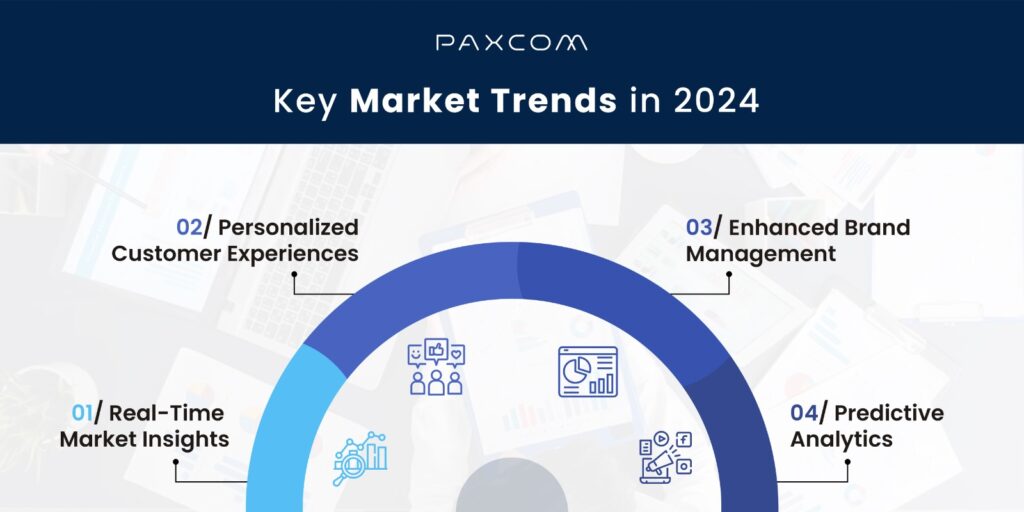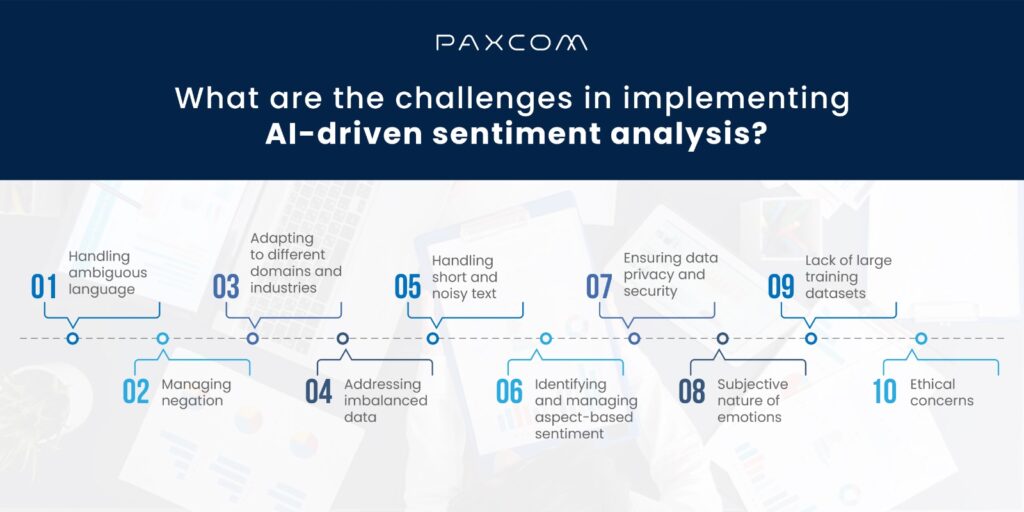In the rapidly evolving landscape of e-commerce, staying ahead of market trends is crucial for online sellers. Understanding consumer sentiment can be a game-changer, and with advancements in artificial intelligence (AI), sentiment analysis has become a powerful tool for navigating market trends. This blog explores the significance of AI-driven sentiment analysis in today’s online marketplace and how it can empower sellers to make informed decisions.
Table of Contents
The Dynamics of Market Trends
Market trends are like waves in the ocean, constantly shifting and reshaping the landscape of consumer preferences. From seasonal fluctuations to sudden shifts in popular culture, staying attuned to these trends is essential for online sellers to remain competitive. However, identifying and analyzing these trends manually can be a daunting task, especially with the vast amount of data generated by online platforms.
The Role of Sentiment Analysis
This is where sentiment analysis comes into play. By leveraging AI algorithms, sentiment analysis can sift through vast amounts of textual data from various sources such as social media, product reviews, and online forums to gauge the sentiment of consumers towards specific products, brands, or trends. Instead of manually combing through this data, AI-driven sentiment analysis automates the process, providing sellers with valuable insights in real-time.
Key Market Trends in 2024 & How AI Sentiment Analysis is Helping

Real-Time Market Insights
Businesses are prioritizing real-time data to adapt quickly to market shifts. Sentiment analysis tools help instantaneously monitor public opinion and customer feedback, allowing companies to respond promptly to changing conditions. AI-powered tools analyze data from social media, news articles, and other platforms, providing immediate insights into market trends. This capability helps businesses swiftly adjust strategies in response to emerging trends and shifts in public sentiment, addressing issues such as a sudden spike in negative feedback.
Personalized Customer Experiences
Personalization remains a key trend, with companies leveraging sentiment analysis to understand individual customer preferences. Businesses can tailor their offerings by analyzing customer reviews, feedback, and social media conversations accordingly, resulting in improved customer satisfaction and loyalty. This deeper understanding of consumer preferences and pain points is crucial for developing products and services that meet customer needs and expectations.
Predictive Analytics
Businesses are increasingly using predictive analytics to forecast future trends. Sentiment analysis contributes by identifying patterns in consumer sentiment, enabling companies to anticipate market movements and prepare strategies in advance. This predictive capability helps businesses make proactive decisions, such as optimizing inventory levels, planning marketing campaigns, and setting competitive pricing strategies. Analyzing historical data and current sentiment trends allows for more accurate market movement forecasts.
Enhanced Brand Management
With brand reputation being more critical than ever, companies are using sentiment analysis to monitor and manage their brand image. This involves tracking social media mentions and public sentiment to address issues before they escalate. Continuous monitoring of brand reputation helps identify potential issues early, allowing businesses to address negative feedback promptly and maintain a positive brand image. For example, a sudden increase in negative reviews can trigger immediate investigation and response to resolve customer issues.
What are the challenges in implementing AI-driven sentiment analysis?

- Handling ambiguous language: AI sentiment analysis models struggle to interpret ambiguous language such as sarcasm, idioms, and double meanings, which can significantly alter the intended sentiment.
- Managing negation: Negation can drastically change the sentiment of a sentence. AI models must accurately detect and account for negation to provide precise sentiment predictions.
- Adapting to different domains and industries: Each industry has unique jargon and terminology that can affect sentiment interpretation. AI models need to be adaptable to these differences for accurate analysis.
- Addressing imbalanced data: Sentiment analysis models often face imbalanced data where one sentiment class is overrepresented. This can bias the model’s predictions, requiring techniques to balance the data for accurate outcomes.
- Handling short and noisy text: Social media platforms frequently produce short and noisy text, posing challenges for sentiment analysis. AI models must use advanced techniques to handle these text types effectively.
- Identifying and managing aspect-based sentiment: Traditional sentiment analysis usually focuses on overall sentiment, but users might have varying sentiments about different aspects of a product or service. AI models need to identify and analyze these specific sentiments.
- Ensuring data privacy and security: Handling sensitive data is crucial in AI-driven sentiment analysis. Ensuring data privacy and security is essential to maintain trust and avoid legal issues.
- Subjective nature of emotions: The subjective nature of emotions makes it challenging for AI models to measure them accurately, as emotions can be difficult to quantify.
- Lack of large training datasets: AI models require large, diverse training datasets to recognize subtle emotional cues effectively. The absence of such datasets can impede the performance of sentiment analysis.
- Ethical concerns: AI-driven sentiment analysis raises ethical issues such as algorithmic bias, lack of transparency in algorithms, and the potential for manipulating public opinion. Ensuring ethical practices is critical in this field
Key Components of AI-Driven Sentiment Analysis
- Data aggregation: Gather relevant textual data from diverse sources such as social media, online forums, news articles, and review sites.
- Data cleaning and preprocessing: Clean and preprocess collected data to remove noise and standardize the text format for analysis.
- Natural Language Processing (NLP): Apply advanced NLP techniques using machine learning models like word embedding and neural networks to identify sentiments (positive, negative, neutral) and assess sentiment intensity.
- Statistical and data analysis: Utilize statistical methods to interpret sentiment trends over time, revealing shifts in public opinion and emerging patterns in sentiment.
- Visualization: Visualize sentiment trends through graphs and charts to facilitate intuitive understanding and actionable insights from the analyzed data.
Applications of AI-Driven Sentiment Analysis
- Retail and E-commerce: Enhance understanding of customer preferences and market trends to optimize inventory and marketing strategies.
- Crisis management: Detect and address negative sentiments early to manage brand reputation and customer loyalty effectively.
- Product development: Identify specific product features that impact customer satisfaction, guiding targeted improvements.
- Brand perception: Evaluate customer perception of brand messaging to refine communication strategies and enhance brand affinity.
- Predictive analytics: Forecast market movements and consumer behavior based on historical data and sentiment analysis, enabling proactive business strategies.
Conclusion
Navigating market trends is crucial for online sellers in 2024, and AI-driven sentiment analysis is a key tool for this purpose. By leveraging AI to analyze consumer sentiment from social media, product reviews, and other online sources, businesses can gain real-time insights into market dynamics and customer preferences. Paxcom’s experts help online sellers utilize these insights to adapt strategies, predict trends, and enhance brand management, ensuring they remain agile and responsive in the ever-changing e-commerce landscape.














